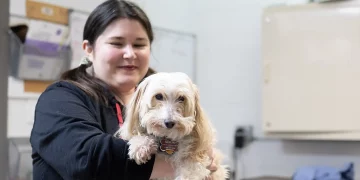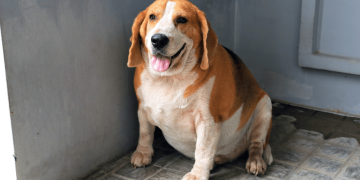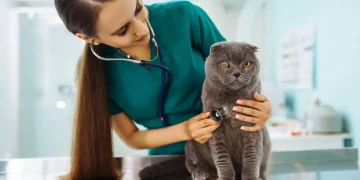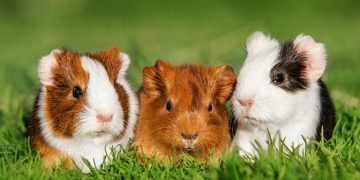As pet owners, we are constantly searching for the best ways to ensure our furry friends live long, healthy, and vibrant lives. Among the many dietary options available for pets, the raw food diet has gained significant popularity in recent years. Raw feeding involves providing pets with uncooked meat, bones, and sometimes vegetables or fruits, mimicking the diet of their wild ancestors. While the raw food diet can offer numerous health benefits, it also presents challenges and risks that pet owners must carefully consider before making the switch.
In this article, we will explore the pros and cons of raw diets for pets, the benefits of such a diet, potential risks, and how to make an informed decision based on your pet’s individual needs.
1. What is a Raw Diet for Pets?
A raw diet for pets, often referred to as a “BARF” diet (Biologically Appropriate Raw Food), typically consists of raw meat, bones, organs, fruits, vegetables, and sometimes eggs or dairy products. The goal is to replicate the diet that animals would eat in the wild, with an emphasis on high-protein, low-carbohydrate foods.
There are several variations of raw diets for pets, including:
- Raw Meat-Based Diets: This diet includes raw muscle meat, organs, and bones (either whole or ground). These ingredients closely resemble what wild animals would consume.
- Raw Meat and Vegetables: Some raw diets also incorporate vegetables, fruits, and occasionally grains to provide a more balanced approach to the diet.
- Pre-packaged Raw Foods: Many pet food brands offer frozen or freeze-dried raw food that’s carefully formulated to meet the nutritional requirements of pets.
While proponents of raw diets argue that these foods can enhance pet health, the debate over whether a raw diet is truly beneficial continues.
2. The Pros of Raw Diets for Pets
2.1. Improved Coat and Skin Health
One of the primary benefits of feeding a raw diet to your pet is the improvement in coat and skin health. Raw food is rich in omega-3 and omega-6 fatty acids, which are essential for maintaining healthy skin and a shiny coat. Many pet owners who transition to raw feeding report that their pets have softer, shinier fur and fewer skin irritations, allergies, or dryness.
2.2. Better Digestion and Stool Quality
Raw diets are typically easier for pets to digest compared to processed kibble, as they contain fewer fillers and are closer to the natural, unprocessed foods pets would eat in the wild. This can lead to improved digestion, less bloating, and fewer gastrointestinal issues like constipation or diarrhea. Pet owners often note that their pets’ stools are smaller, firmer, and less smelly when they are on a raw diet.
Additionally, raw food diets are usually free from artificial preservatives, colors, and flavors, which can be irritating to your pet’s digestive system. The lack of these additives can result in fewer stomach upsets and a more stable digestive tract.
2.3. Increased Energy Levels
Many pet owners report that their pets experience a surge in energy when switched to a raw food diet. This is because raw food is nutrient-dense and easily digestible, meaning pets can absorb more nutrients from their meals. A raw diet typically contains high-quality proteins and fats that provide the energy necessary for active pets, promoting overall vitality and stamina.
Pets on raw diets may also exhibit better muscle tone, as the higher protein content helps to support lean muscle development. This is particularly beneficial for active or working dogs who need a diet that supports their energy output.
2.4. Dental Health Benefits
Raw feeding can promote better dental health in pets due to the act of chewing raw bones and meat. The chewing action helps to naturally clean teeth, reducing the buildup of plaque and tartar. The process can help prevent gum disease and promote overall oral hygiene, which is especially important for dogs who are prone to dental issues.
Some studies have shown that dogs who consume raw foods are less likely to develop dental disease than those on processed kibble diets. The natural chewing process also strengthens jaw muscles and helps with overall tooth and gum health.
2.5. Weight Management
A raw diet can aid in weight management by providing pets with the proper balance of proteins, fats, and nutrients. Because raw food is typically high in protein and low in carbohydrates, it can help pets feel fuller for longer and reduce the chances of overeating. Additionally, raw food diets are more satiating due to their lack of fillers and grains, making them an excellent choice for pets that are overweight or struggling with obesity.
For pets who need to lose weight, raw diets allow for controlled portions of high-quality protein and fat, helping them achieve a healthy weight without compromising their nutritional needs.

3. The Cons of Raw Diets for Pets
3.1. Risk of Bacterial Contamination
One of the primary concerns with raw diets is the potential for bacterial contamination, such as Salmonella or E. coli, which can pose a serious risk to both pets and their owners. Raw meat, particularly when handled improperly or not stored at the right temperature, can harbor harmful pathogens that may lead to foodborne illnesses. Pets who consume contaminated food can suffer from gastrointestinal issues, including vomiting, diarrhea, and fever.
While pets’ digestive systems are more resilient than humans to bacteria, there is still a risk of infection. Pet owners who opt for a raw diet should take precautions to ensure that food is handled safely and that their pets’ meals are kept at appropriate temperatures.
3.2. Nutritional Imbalance
Raw diets can lead to nutritional imbalances if they are not properly formulated. While raw foods contain many beneficial nutrients, feeding a raw diet requires careful planning to ensure that pets are getting all the vitamins, minerals, and essential nutrients they need. Without the right balance of calcium, phosphorus, omega-3s, and other vitamins, pets can suffer from deficiencies that could lead to long-term health problems.
For example, feeding only muscle meat and not enough organ meats or bones can result in a lack of important nutrients like calcium and vitamin A. Pet owners who choose a raw diet need to carefully research and follow guidelines for a balanced meal plan or work with a veterinarian to create a well-rounded diet.
3.3. Cost and Time Commitment
A raw food diet can be more expensive than traditional pet food. The high cost of purchasing high-quality meats, bones, and supplements can add up quickly. Pre-packaged raw foods may be convenient but tend to cost more than dry kibble or canned foods.
Additionally, preparing a raw diet requires more time and effort than simply pouring a bowl of kibble. Pet owners must ensure that meals are stored properly, ingredients are fresh, and food is safely handled to avoid contamination. Preparing balanced meals for your pet might also require research and careful planning to avoid nutritional deficiencies.
3.4. Potential for Choking or Injury
One of the risks associated with feeding raw bones is the potential for choking or injury. While raw bones are softer than cooked bones and are generally safer for pets, there is still a risk that they can splinter or cause blockages in the digestive tract. Some pets, particularly those that are aggressive chewers, may also pose a risk to themselves by breaking teeth on hard bones.
It is essential to supervise your pet while they are eating raw bones, especially large or dense bones, and ensure they are appropriately sized for their breed and chewing ability.
3.5. Limited Veterinarian Support
Many veterinarians are cautious about recommending raw diets for pets due to the potential risks associated with bacterial contamination and nutritional imbalances. While some vets may support raw feeding, others may advise against it, particularly if your pet has underlying health conditions, a compromised immune system, or a history of gastrointestinal issues.
It can be challenging for pet owners to find a veterinarian who is fully on board with raw feeding, which may make it harder to obtain professional advice on creating a safe and balanced raw diet.
4. How to Make an Informed Decision
When deciding whether a raw diet is right for your pet, it’s essential to carefully consider their age, breed, health status, and lifestyle. Here are some steps to help you make an informed decision:
4.1. Consult Your Veterinarian
Before transitioning to a raw diet, it’s crucial to consult your veterinarian, especially if your pet has existing health concerns. Your vet can help assess your pet’s nutritional needs and advise whether a raw food diet is suitable. They can also guide you on safe practices for preparing and handling raw food.
4.2. Gradual Transition
If you decide to switch to a raw food diet, it’s important to do so gradually. Abruptly changing your pet’s food can lead to digestive upset, including vomiting or diarrhea. Begin by mixing small amounts of raw food with their current food and gradually increase the proportion of raw food over the course of several days or weeks.
4.3. Focus on Balance
If you choose to feed a raw diet, focus on providing a well-balanced and varied meal plan. Ensure that you include the necessary nutrients, such as proteins, fats, vitamins, and minerals. Consider consulting a pet nutritionist or working with your veterinarian to create a custom meal plan for your pet’s needs.
4.4. Monitor Your Pet’s Health
Once your pet is on a raw diet, closely monitor their health. Look for improvements in their coat, energy levels, and overall well-being. However, if you notice any signs of gastrointestinal distress, lethargy, or other health issues, reconsider the raw food approach and consult your veterinarian.
5. Conclusion
A raw diet for pets offers several potential benefits, including improved coat and skin health, better digestion, increased energy, and dental health. However, it also comes with certain risks, including bacterial contamination, nutritional imbalances, and increased costs.
Ultimately, whether a raw diet is right for your pet depends on their specific needs, health conditions, and your ability to
manage the time and effort required for feeding. By carefully weighing the pros and cons and consulting with a veterinarian, you can make the best decision for your pet’s long-term health and well-being.























































